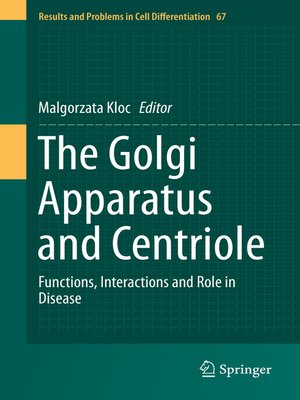The Golgi Apparatus and Centriole
ebook ∣ Functions, Interactions and Role in Disease · Results and Problems in Cell Differentiation
By Malgorzata Kloc

Sign up to save your library
With an OverDrive account, you can save your favorite libraries for at-a-glance information about availability. Find out more about OverDrive accounts.
Find this title in Libby, the library reading app by OverDrive.



Search for a digital library with this title
Title found at these libraries:
| Loading... |
This volume takes a closer look how the cell organelles Golgi apparatus (also known as the Golgi complex or Golgi body), and centriole are structurally and functionally intertwined.
Initially, it was believed that the role of Golgi complex is limited to the packaging and preparation for secretion of various cellular proteins, while the centriole participates in cell division and cilia formation. However, since their discovery nearly 200 years ago, it became clear that these two organelles are interacting, and that their functions are much more complex and far reaching than previously thought. Recent findings indicate that the Golgi–Centriole relationship may be important for directional protein transport, cell polarization and cell cycle progression. Current studies indicate that Golgi and centriole also participate in development and act as cellular and immunological sensors, and that their abnormalities lead to cell and developmental abnormalities, Alzheimer, cancer, variouslipid disorders and neurological and immunological diseases in humans.
This volume combines the latest information on the structure, molecular composition, and roles of Golgi and centriole in various cellular functions and diseases. The better understanding of the Golgi–centriole interactions may lead to the development of novel therapies for the treatment of various diseases, including cancer.






